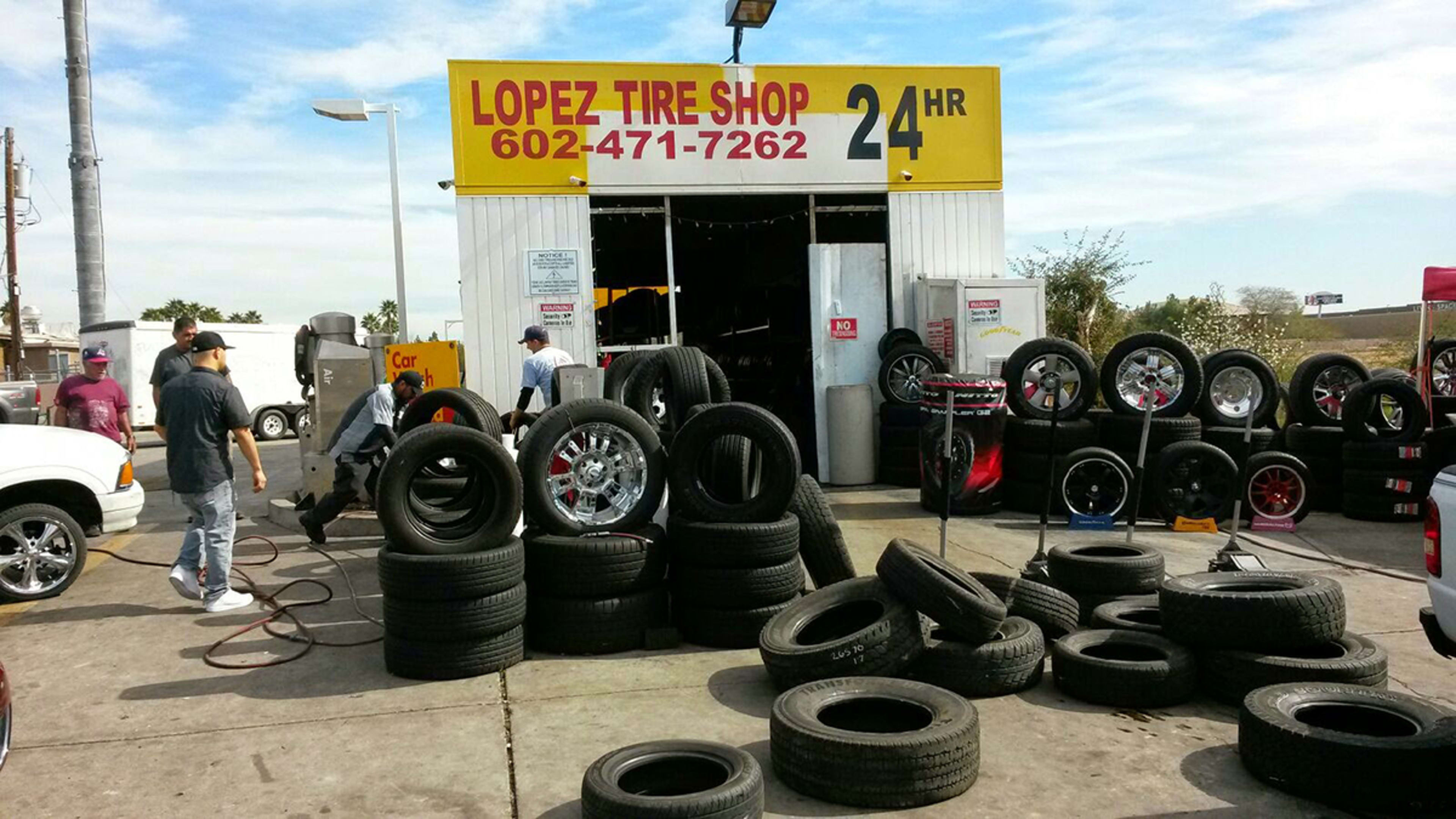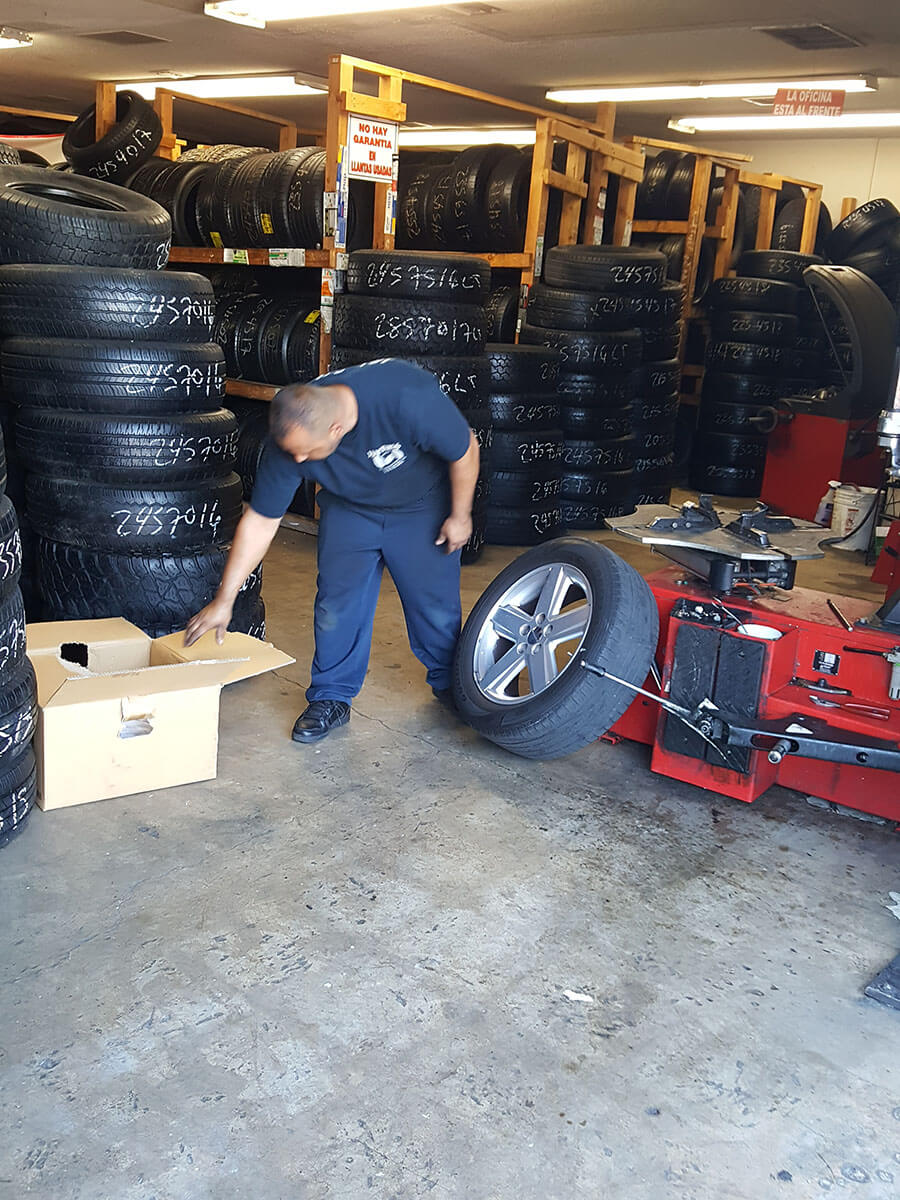Locate Stability at Tire Tracks Morris IL: The Ultimate Tire Shop Experience
Locate Stability at Tire Tracks Morris IL: The Ultimate Tire Shop Experience
Blog Article
The Scientific Research Behind Tire Repair Service and Security
When it pertains to the complex world of tire upkeep and safety and security, there exists a realm of scientific research that frequently remains hidden by the ordinary motorist - tire tracks morris il. The products that make up a tire, the effect of tire stress on overall security, the implications of tread wear, the complex characteristics of tire grip, and the often-overlooked relevance of proper wheel alignment all play essential functions in making sure an automobile operates securely and efficiently. As we browse with the complexities of tire repair service and security, it becomes noticeable that a deeper understanding of these scientific concepts is not just valuable but necessary for every chauffeur on the road
Tire Make-up and Functionality
What materials comprise the make-up of tires, and exactly how do these elements add to their functionality on the road? Tires are complex products, usually made from a combination of rubber compounds, textile, steel cords, and various other chemical additives. One of the most usual sort of rubber used in tires is artificial rubber, which uses resilience and resistance to wear and tear. The textile layers, usually made of nylon, polyester, or rayon, supply strength and stability to the tire framework. Steel cords are included to improve the tire's strength and aid it maintain its shape under different road conditions.
The rubber substances supply hold and grip, permitting the tire to stick to the road surface area and supply security throughout acceleration, stopping, and cornering. Generally, the cautious selection and mix of these materials guarantee that tires can carry out properly and safely on various road surface areas and conditions.
Impact of Tire Pressure on Safety And Security
Maintaining proper tire pressure is crucial for ensuring optimum safety and efficiency while driving. The effect of tire stress on safety can not be overemphasized. Underinflated tires are vulnerable to overheating, which can result in tire blowouts, particularly at high rates. In addition, reduced tire stress impacts the handling and responsiveness of the automobile, increasing the danger of crashes, specifically throughout emergency situation maneuvers. On the various other hand, overinflated tires have less call with the road surface, reducing traction and causing unequal wear on the tire footsteps. This jeopardizes the lorry's security and braking effectiveness, positioning a significant safety and security risk. Properly filled with air tires additionally play a crucial duty in gas efficiency, as underinflated tires can boost moving resistance, causing reduced gas mileage. On a regular basis inspecting and maintaining the correct tire stress not just guarantees security but likewise expands the life-span of the tires, reducing substitute prices in the lengthy run.
Tread Put On and Its Implications
Correct monitoring of tire tread wear is essential for guaranteeing optimal performance and safety and security on the road. As tires wear down, the depth of the tread reduces, reducing the tire's capability to preserve traction, particularly in damp or slippery conditions. The tread pattern and deepness play an important function in directing water away from the tire to avoid hydroplaning and keeping you can look here grasp when driving surface area.
Uneven wear may suggest concerns with tire suspension, inflation, or positioning components. Wear indicators are developed into the tire tread and end up being noticeable when the tread deepness gets to a particular reduced point, indicating the requirement for instant replacement.

Recognizing Tire Grip Characteristics
Keeping track of tire tread wear not only makes certain optimum efficiency and safety and security but also directly affects the grip dynamics of the tires on different roadway surfaces. Tire grip is a vital facet of lorry handling and safety, as it figures out the grip in between the tires and the roadway. Grip characteristics vary depending on roadway problems such as completely dry sidewalk, damp roads, snow, or ice.

Understanding tire grip dynamics is essential for motorists to adjust their driving actions according to the roadway problems. tire tracks morris il. Routinely examining tire tread deepness and condition can significantly boost traction efficiency, guaranteeing more secure driving experiences throughout different surface areas
Importance of Appropriate Wheel Positioning
Ensuring appropriate wheel positioning plays an important this link role in optimizing lorry efficiency and extending tire longevity. Proper wheel placement involves readjusting the angles of the wheels to manufacturer requirements, making certain that they are vertical to the ground and parallel to each other. When placement is off, it can lead to uneven tire wear, lowered fuel performance, and compromised handling.
Among the vital benefits of preserving proper wheel alignment is boosted managing and stability. Misaligned wheels can trigger the lorry to pull away, influencing guiding control and overall driving experience. In addition, right alignment promotes even tire wear, protecting against premature tire replacement and saving money on upkeep expenses in the lengthy run.

Final Thought
In final thought, the science behind tire repair work and safety is essential for keeping vehicle efficiency and making sure driver safety. By recognizing tire structure, pressure, tread wear, traction dynamics, and wheel positioning, chauffeurs can avoid crashes and prolong the life-span of their tires.
The materials that compose a tire, check the influence of tire stress on overall safety and security, the ramifications of step wear, the detailed dynamics of tire traction, and the often-overlooked relevance of appropriate wheel placement all play crucial roles in making certain an automobile operates safely and efficiently. On the other hand, overinflated tires have less call with the road surface, lowering traction and creating uneven wear on the tire treads. Frequently checking and maintaining the appropriate tire pressure not just makes certain safety yet likewise extends the life expectancy of the tires, conserving on substitute expenses in the long run.
Keeping track of tire tread wear not only makes sure optimum efficiency and safety but also straight influences the traction dynamics of the tires on various roadway surface areas. Tire traction is a vital aspect of automobile handling and safety, as it identifies the hold in between the tires and the roadway.
Report this page